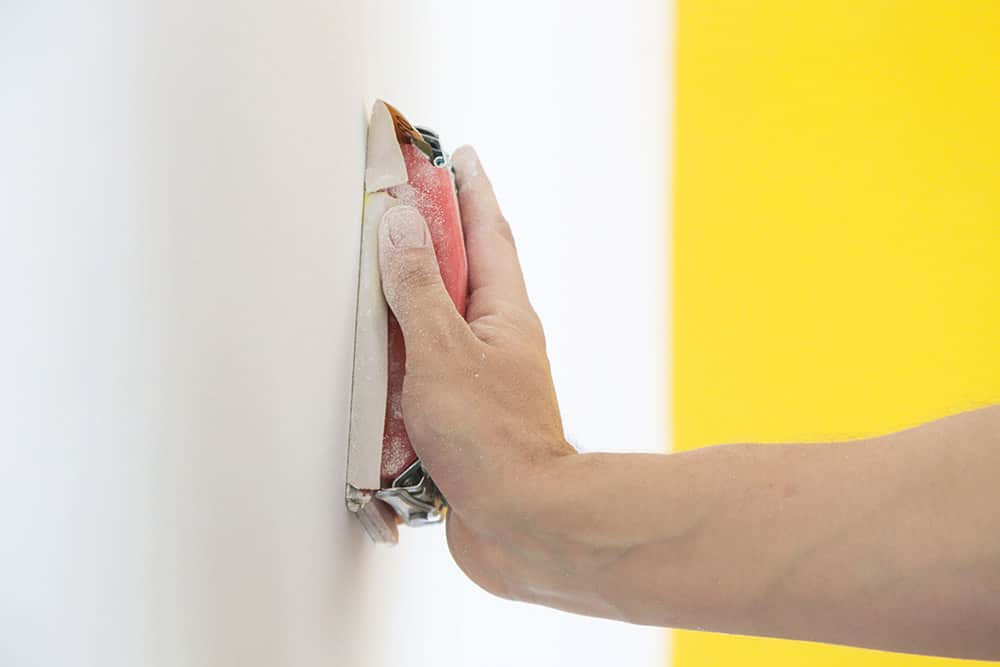Preparing a surface for painting is a crucial step that can make or break the end result. A poorly prepared surface can result in paint peeling or flaking, uneven coverage, and a generally unsatisfactory finish. As a top UK painting contractor, we understand the importance of surface preparation and the impact it has on the final outcome. In this blog, we will share our top tips for preparing different surfaces for painting.
Clean the surface thoroughly
The first step in preparing any surface for painting is to ensure that it is clean. Dust, dirt, grease, and grime can prevent paint from adhering properly to the surface, resulting in a patchy finish. Depending on the surface, you may need to use a different cleaning solution. For example, a mild detergent solution is usually sufficient for walls, while a degreaser may be required for metal surfaces. Make sure you follow the manufacturer’s instructions for any cleaning solution you use and rinse the surface thoroughly with water.
Sand the surface
Sanding the surface will create a rough surface that the paint can adhere to. Sanding is particularly important for glossy or smooth surfaces such as metal, plastic, or varnished wood. Use a fine-grit sandpaper and sand in the direction of the grain. Make sure you wipe away any dust with a damp cloth before proceeding to the next step.
Repair any damage
Before painting, it’s important to repair any damage to the surface. This includes filling in any holes, cracks, or dents in the surface. Use a filler appropriate to the surface and apply it according to the manufacturer’s instructions. Once the filler is dry, sand it down to create a flush surface.
Use a primer
A primer is essential for ensuring that the paint adheres properly to the surface. It also helps to seal any porous surfaces and prevent the paint from soaking in. Make sure you choose a primer that is appropriate for the surface you are painting, for example, a metal primer for metal surfaces. Apply the primer evenly and let it dry completely before painting.
Use masking tape
If you are painting around edges or corners, use masking tape to protect the areas you don’t want to paint. This will help to create clean lines and prevent paint from bleeding onto adjacent surfaces.
Choose the right paint
Finally, it’s important to choose the right paint for the surface you are painting. Different surfaces require different types of paint, for example, oil-based paint for metal surfaces and acrylic paint for walls. Make sure you follow the manufacturer’s instructions for the paint you choose and apply it evenly.
Spray painting vs brush and roller – Does the application method make a difference?
Yes there are some differences between these methods that need to be taken into account. When spray painting, it’s important to prepare the surface to be as smooth and even as possible since any bumps, scratches or imperfections can show through in the finish. To do this, you should clean the surface with a degreaser or a mild detergent solution, sand the surface lightly with a fine-grit sandpaper, and apply a primer to the surface to ensure good adhesion and to provide a uniform surface for the paint. When applying paint with a brush and roller, the surface doesn’t need to be quite as smooth and even. However, it’s still important to clean the surface and remove any loose paint or debris before painting. You should clean the surface, fill any holes or cracks, sand the filler down to create a smooth surface, and apply a primer before painting.
Surface preparation – The key points
In conclusion, preparing a surface for painting is a crucial step that should not be overlooked. By following these tips, you can ensure that the surface is clean, smooth, and ready for painting.

